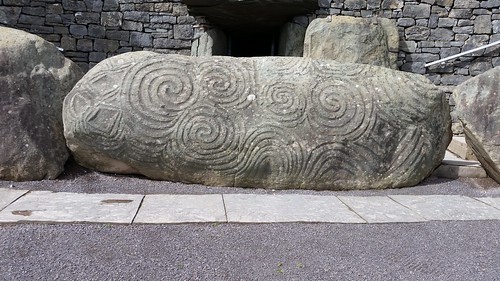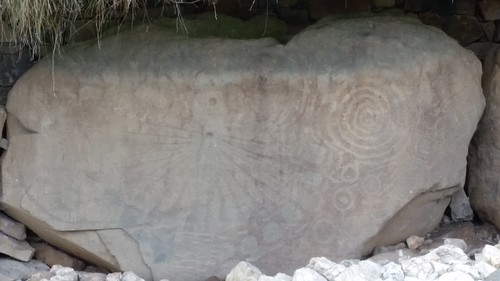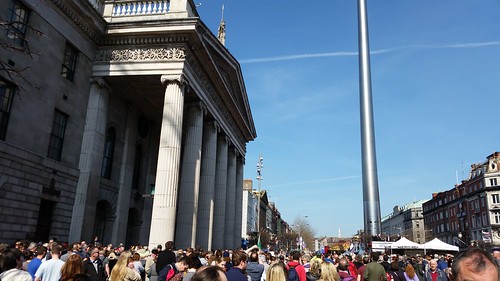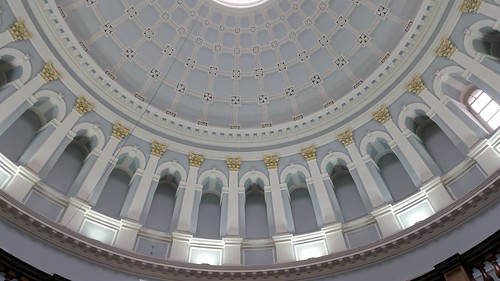Eilis O’Hanlon has a piece in the Sunday Independent today which irritated me quite a lot. I don’t usually read her pieces so it’s entirely possible she usually delivers her pieces in this well-shot manner. The problem is, as a contribution to the debate, it is shallow, it misses a lot of core points, and instead of dealing with the underlying issue which is how do we best do education, she just lobs criticism after criticism at the teachers. In every sense of the word, she personifies the lack of respect which is common in Ireland for teachers.
There are coal miners in China who complain less about their workplace conditions than Irish teachers. Trawlermen in the North Sea don’t feel so hard done by. Listening to members of the teaching profession in Ireland, one could almost be forgiven for thinking the TV series World’s Toughest Job was devoted entirely to their ordeal.
This is just a great start for opening a dialogue, don’t you think? There is so much bad faith in this, any teacher would be forgiven for getting up from the table and walking away. O’Hanlon is not interested in listening if she’s using this sort of hyperpole.
The thing is, in Ireland, we need a dialogue. About the only thing you can say for O’Hanlon’s piece is that she didn’t talk about Finland. That restraint is admirable. It is possible, that unlike David McWilliams, she realises that this would lead to a wholesale restructuring on the financial side. Finland has few to no private schools, and the ones that do exist don’t get to select on their own terms. And it is entirely possible that she understands that Finland actually set out to set up an equality based system, and the high PISA scores were a side benefit.
The dialogue we need is not about teachers, or teachers’ holidays, or even reform of the Junior Certificate. The dialogue we need is around what we expect and need from education. If you step away from ranking tables – which we should – the question remains: what constitutes a reasonable level of education in this day and age. No one in Ireland discusses that in public, it seems, for all the moaning around Irish, maths, religion, funding, computer coding. There never seems to be any debate around whether the cycle system we have in place is still appropriate: we do primary school up to 12, junior cycle for three years, senior cycle for 2-3 years (it still varies). We may or may not have a transition year. We do not discuss the introduction of specialised teachers at an early stage. We castigate teachers when kids do badly; we allow parents to abscond their responsibilities.
Most of my teenage years were spent listening to kids talking about how we’d never need algebra. When would they ever need to factorise a quadratic equation.
It seems to me there is a narrative that suggests Irish people can only really deal with direct return on investment: I learn to factorise quadratic equations only because I will need to factorise quadratic equations in the future. We teach people stuff in university that can immediately be turned into money. In certain respects, the debate around education in Ireland is extremely shallow.
The thing is, I agree with Eilis O’Hanlon on a couple of points:
Our students are terrible at foreign languages. Proficiency in maths continues to slip.
She says other stuff which I don’t agree with which we will come to later. Yes, I think proficiency in mathematics is slipping. And yes, our students are terrible at foreign languages. However, I ran the numbers last week and in absolute numbers – not proportionally – in absolute numbers, we are turning out more students with higher level languages like French and German than England/Wales is at A-level.
In other words, blaming teachers is an all too facile way of looking at issues. I’d like to see a core aspiration for the education system in terms of identifying what we want out of it. Yes, I’d like people to be maths-capable. I’d like the students coming out of our language teaching systems to be functionally fluent in those languages. Where possible, I’d like to see secondary level subjects to open doors to further study, be it structured or independent.
But more on that at the moment. Eilis makes a couple of assertions:
-
Under European directives, the minimum number of days that children must spend in school is greater at primary than secondary level, when all the evidence suggests that it should be the other way round.
-
In 2010, most shockingly, pupils become the first generation in Ireland to have lower levels of literacy than their parents.
A good journalist would actually provide supporting evidence for those. Where is the evidence that children should spend more time in secondary than at primary level? And what is the evidence that the current generation has lower literacy than their parents?
Eilis O’Hanlon writes at length about how journalism has been upturned by technology. Given that I read that piece on the Independent’s website, I’d expect links to the data backing up those assertions.
At no point in the article, does O’Hanlon outline what she expects of an education system; she purely uses the piece to target and criticise teachers,
Here’s the issue: there are some core problems around Junior Certificate reform; the key one being that big bogey I’ve mentioned: how does it fit into a framework for what we want from education when we never have the conversation about what we want from education.
After that, when you read a diatribe against teachers like O’Hanlon’s one, and you understand that a lot of people don’t respect teachers to be able to teach, it becomes easier to understand why teachers particularly respect the independence and arms-lengthness of a central marking system. If we don’t trust teachers to know best how to teach, why are we demanding that they trust us to trust them to know how best to mark what we don’t trust them to teach.
There are a lot of issues around education right now. When I was going through the school system, Facebook did not exist. Mobile phones and always on internet did not exist. Your average teenager is not spending their time exploring Wikipedia when Instagram exists.
The demands on young attention have increased massively since I was in the school system, and, I suspect, since Eilis O’Hanlon was in the education system. The extent to which teachers are allowed to be owners of their teaching space has dropped. In an era of data where the vast majority of people are clueless about statistics, there is a greater demand for things like schools tables. But none of this answers the question “What do we want from education?”
Here’s what I’d like. I’d like the product of our education to be young well adjusted people who are numerate, literate, reasonably fluent in at least one foreign language, reasonably able to read a piece of journalism like O’Hanlon’s piece above and criticise its failings effectively. People who are aware of where to find the steps to things which interest them. I’d like them to be tolerant, reasonably fit and healthy. I would like the education system to provide them with options, not limitations.
On the detail side of maths literacy and foreign languages I would suggest that the core supports for that should be in the primary system – I’d tend to suggest we start foreign languages at the age of 10 for example, and specialised maths teaching at around the same age. I suspect that with some discussion, we could look at reconfiguring the primary and secondary schooling stages but that this needs to be seen in the context of what we want each to deliver.
If Eilis O’Hanlon is really interested in improving educational outcomes in this country, starting with teacher bashing is probably one of the least effective tactics to take. A discussion which includes teachers and their concerns would be more constructive than this kind of insulting and dismissive piece of ignorance.
_____________________
PS – I am not a teacher. Just in case anyone thinks I’m a teacher railing against negative coverage.
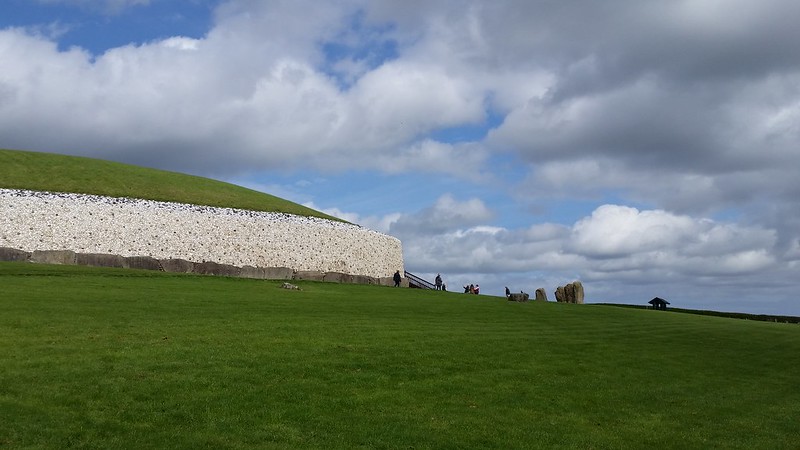
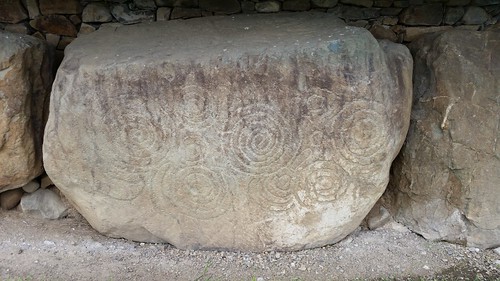 I find what’s around the base of Knowth simply to be on a scale which is borderline unimaginable at Newgrange.
I find what’s around the base of Knowth simply to be on a scale which is borderline unimaginable at Newgrange.